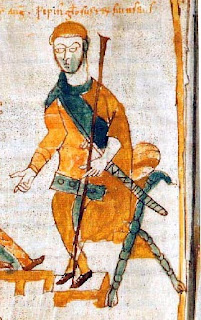Adalgis earlier had made contact with Emperor Constantine V. Many Lombards did not submit to Frankish rule, assuming that Adalgis would return and claim the throne. The Byzantine army arrived in southern Italy in late 788, led by Adalgis and a Byzantine administrator named John who had experience leading the army against the Abbasids in 781 when they invaded Asia Minor.
Unfortunately, some Lombards had accepted Charlemagne's overlordship. The prince of Benevento, for instance, Grimoald III, had chosen alliance with the Franks and led part of the combined force of Lombards that met the Byzantine army. Along with Grimoald was Duke Hildeprand of Spoleto, who had originally fought the Franks but had paid homage to Charlemagne 10 years earlier in exchange for the Franks' promise to defend his land from further invasions. A small number of Franks were involved in this army.
The clash between Byzantins and the Franks/Lombards took place at Calabria (the "toe" of the "boot" of Italy). Details are few, though the victory of the Lombards is undisputed. Alcuin of York, in a letter dated a year after the encounter, offers the details that there were 4000 Byzantines killed and 1000 captured, upon which the remaining force fled to the ships. One of those captured was Sisinnios, the brother of Patriarch Tarasios. Adalgis did not get his throne, and in fact disappears from the historical record, although you can see a portrayal of him above from 1664.
Several years later, in 797, Constantine VI sent a strategos ("general") to Charlemagne's seat of power, Aachen, probably to discuss the release of prisoners from the battle. Sisinnios was not released until 798 following negotiations by Empress Irene. By that time, Constantine VI was dead...
...and it wasn't from natural causes. Let's look at the (fairly brief) life of Emperor Constantine VI tomorrow.



















